I want to create a scatter plot matrix which will be composed by some subplots. I have extracted from a .txt file my data and created an array of shape (x,y,z,p1,p2,p3). The first three columns of the array represent the x,y,z coordinates from the original image that these data come from and the last three columns(p1, p2, p3) some other parameters. Consequently, in each row of the array the parameters p1, p2, p3 have the same coordinates(x,y,z).In the scatter plot, I want to visualize the p1 parameter against the p2, p3 parameters in a first stage. For every point I pick, I would like its (x,y,z) parameters from the first three columns of my array to be annotated and the point with the same coordinates in the adjacent subplot to be highlighted or its color to be modified.
In my code, two subplots are created and in the terminal are printed the (p1,p2 or p3) values that are acquired by picking a point, the respective values of the same point in the adjacent subplot and the (x,y,z) parameters of this point.
Moreover, when I pick a point in the first subplot, the color of the corresponding point in the second subplot changes but not vice versa. This color modification is recognizable only if I resize manually the figure. How could I add interactivity for both subplots without having to tweak the figure in order to notice any changes? What kind of modifications should I make in order this interactivity to be feasible in a reduced scatter plot matrix like in this question "Is there a function to make scatterplot matrices in matplotlib?" . I am not an experienced python, matplotlib user, so any kind of help will be appreciated
import numpy as np
import matplotlib.pyplot as plt
import pylab as pl
def main():
#load data from file
data = np.loadtxt(r"data.txt")
plt.close("all")
x = data[:, 3]
y = data[:, 4]
y1 = data[:, 5]
fig1 = plt.figure(1)
#subplot p1 vs p2
plt.subplot(121)
subplot1, = plt.plot(x, y, 'bo', picker=3)
plt.xlabel('p1')
plt.ylabel('p2')
#subplot p1 vs p3
plt.subplot(122)
subplot2, = plt.plot(x, y1, 'bo', picker=3)
plt.xlabel('p1')
plt.ylabel('p3')
plt.subplots_adjust(left=0.1, right=0.95, wspace=0.3, hspace=0.45)
# art.getp(fig1.patch)
def onpick(event):
thisevent = event.artist
valx = thisevent.get_xdata()
valy = thisevent.get_ydata()
ind = event.ind
print 'index', ind
print 'selected point:', zip(valx[ind], valy[ind])
print 'point in the adjacent subplot', x[ind], y1[ind]
print '(x,y,z):', data[:, 0][ind], data[:, 1][ind], data[:, 2][ind]
for xcord,ycord in zip(valx[ind], valy[ind]):
plt.annotate("(x,y,z):", xy = (x[ind], y1[ind]), xycoords = ('data' ),
xytext=(x[ind] - .5, y1[ind]- .5), textcoords='data',
arrowprops=dict(arrowstyle="->",
connectionstyle="arc3"),
)
subplot2, = plt.plot(x[ind], y[ind], 'ro', picker=3)
subplot1 = plt.plot(x[ind], y[ind], 'ro', picker=3)
fig1.canvas.mpl_connect('pick_event', onpick)
plt.show()
main()

In conclusion, information are printed in the terminal, independently of the subplot, when I pick a point. But, the color is modified only in the points of the right subplot, when I pick a point in the left subplot and not vice versa. Moreover, the change of the color is not noticeable until I tweak the figure(e.g. move it or resize it) and when I choose a second point, the previous one remains colored.
Any kind of contribution will be appreciated. Thank you in advance.
